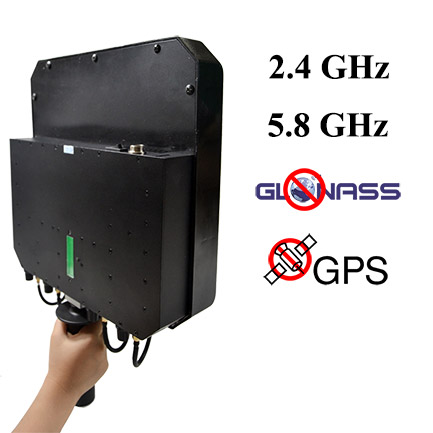TOP > 学問・研究 > Perfectjammer道場 > ネタ
道場TOP ネタ一覧 Perfectjammer道場
GPS jammers are active on the battlefield
- ◇評価 0ポイント
- ◇閲覧回数 4,707回
- ◇登録日
- 2019年1月14日
-
- perfectjammer
- 道場主
Lv.15
GPS jamming from the military to civilian use
Navy engineers have developed a handheld GPS jammer locator device for determining the strength of an L1 GPS frequency jamming signal and the direction of the jamming signal. The handheld GPS signal jammer locator has two modes of operation, an amplitude mode for determining signal strength, and a difference mode for determining direction. The technology can be acquired for commercial development by licensing the patent from the Navy.
A log amplifier utilizes signal compression to provide a log transfer function covering IF signals within a power level range of +10 dBm to -70 dBm. The log amplifier then provides a one-volt to five-volt signal which represents the power level range of +10 dBm to -70 dBm for the 70 MHz IF signal. The output of the log amplifier is sequentially switched by an integrated switch with the sample and hold circuits in synchronization with the RF signal Switching by the RF switch. The output signals from the sample and hold circuits are Summed to determine signal strength which is an indication of the approximate distance to the jammer source and differenced to indicate the azimuth direction of arrival of the jamming signal.
<iframe allow="accelerometer; autoplay; encrypted-media; gyroscope; picture-in-picture" allowfullscreen="" frameborder="0" height="315" src="https://www.youtube.com/embed/qNqi_mKw4eM" style="color: rgb(0, 0, 0); font-family: "Microsoft YaHei"; font-size: medium;" width="560"></iframe>The revolution of electronic warfare
The electronic war was on display from the start of the Russian incursion into Crimea in the spring of 2014. Not long after Russian EW equipment began rolling into the region, Ukrainian troops began to find that their radios and phones were unusable for hours at a time. Meanwhile, the Organization for Security and Co-operation in Europe, an international conflict-monitoring group, has consistently reported that its drones watching the conflict in eastern Ukraine have been “subject to military-grade GPS jamming,” forcing monitors to scrub missions taking stock of the war below.
What is changed is the range of the portable jammer. The Orlan-10 drones already have a range of 75 miles, which means that, with the latest update on the jammer, the drone pod can interfere with signals up to 135 miles away from where the drone was launched. TASS reports that the 60-mile range is a 3.5 times increase in distance from the initial range.
While still cheaper than a missile, the rounds are more expensive than previously expected, as they require more advanced guidance systems to ensure that a simple GPS jammer doesn't render them inoperable.
This is still an incorrect statement. Even in you plugged in coordinates and had the drone fly an automated route it still relies on a gps signal for orientation, and gps can easily be jammed/spoofed.
GPS jamming is extremely common on the battlefield as well. The real difficulty would be inertial navigation, or terrain following cameras. Luckily inertial navigation is not only expensive, but it's difficult to get right, and can't update it's mission on the fly if it's being RF jammed.
ブログ? そんなの必要ありません! 今日から、いきなりアフィリエイトスタート!
【まにあ道アフィリエイト】まにあ道ならAmazonアソシエイトIDを利用してネタを書くだけで、お気軽に始めていただけます。













 シュリのおすすめネタ
シュリのおすすめネタ
コメントはまだありません。